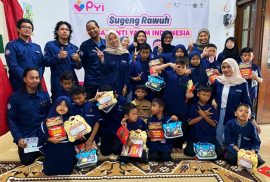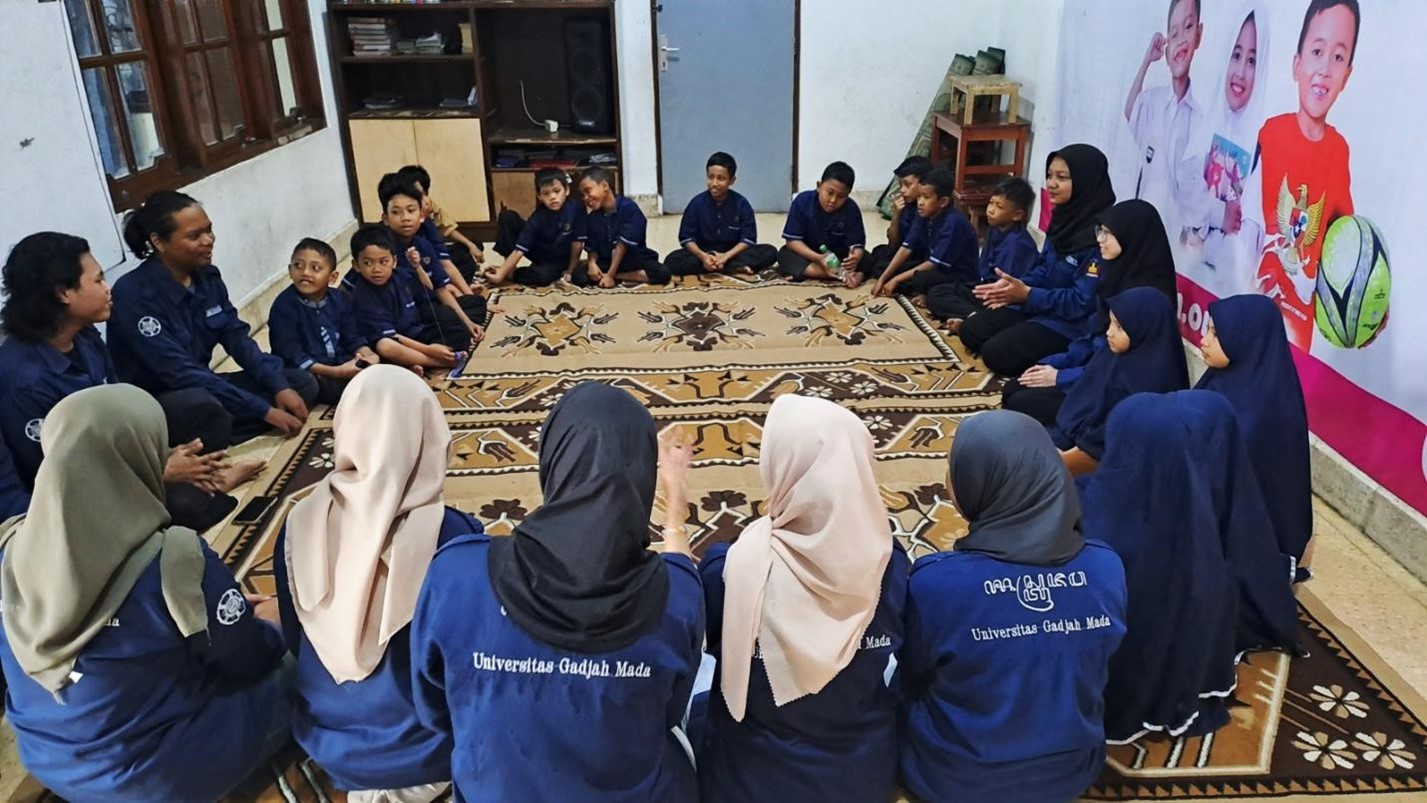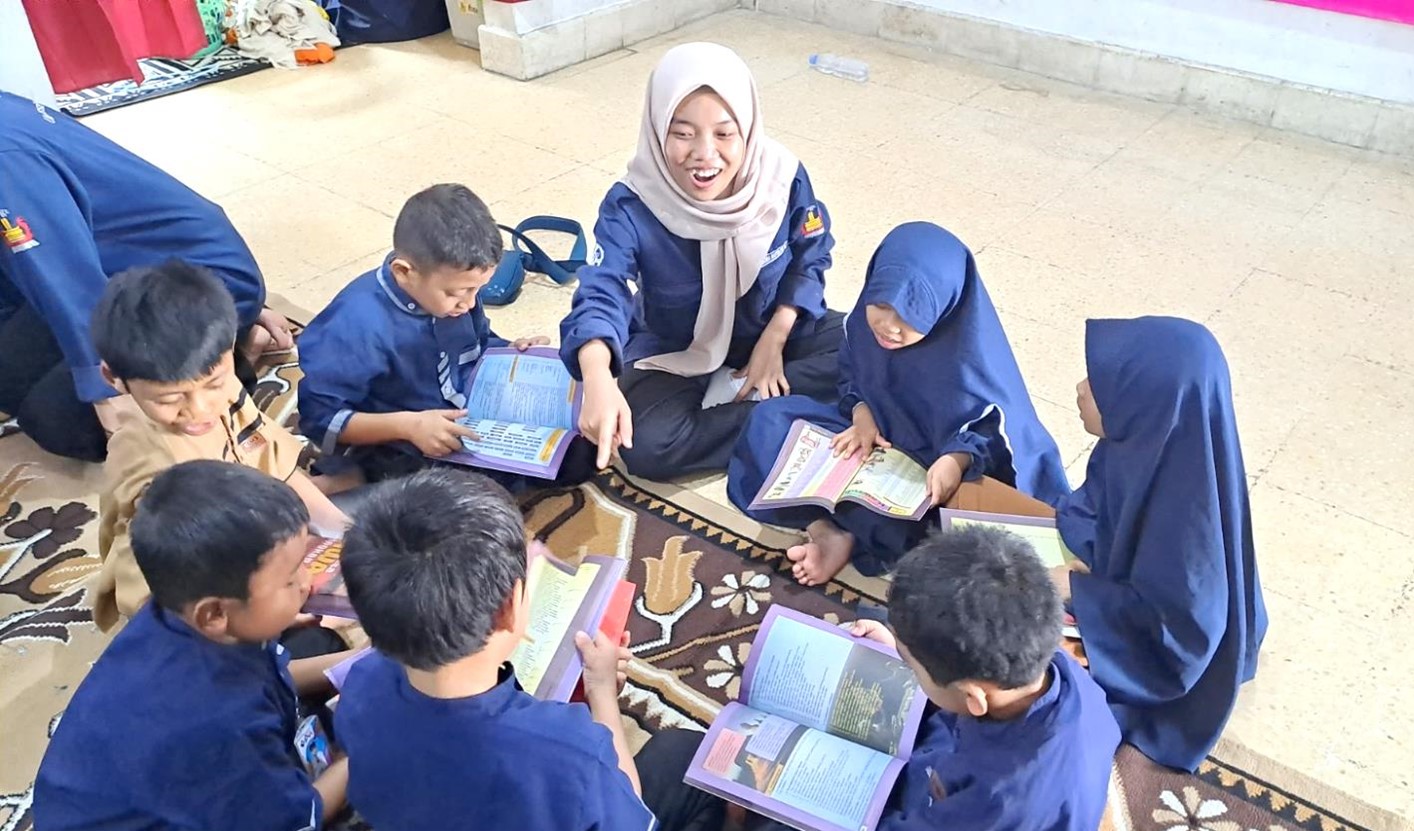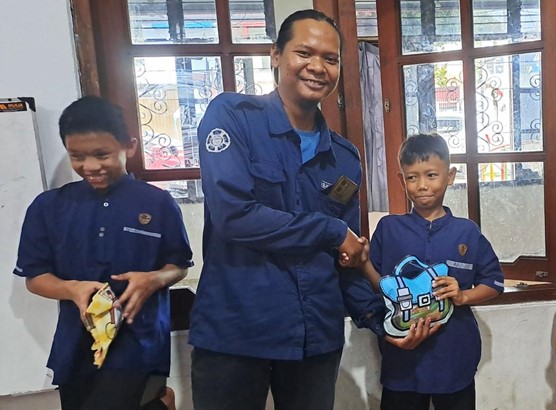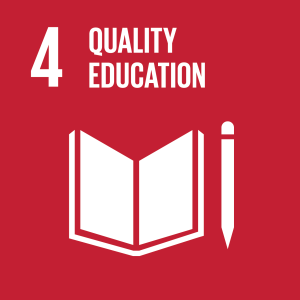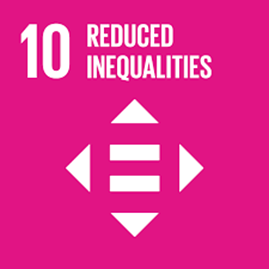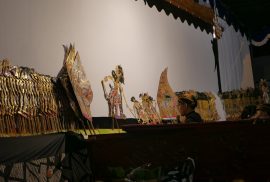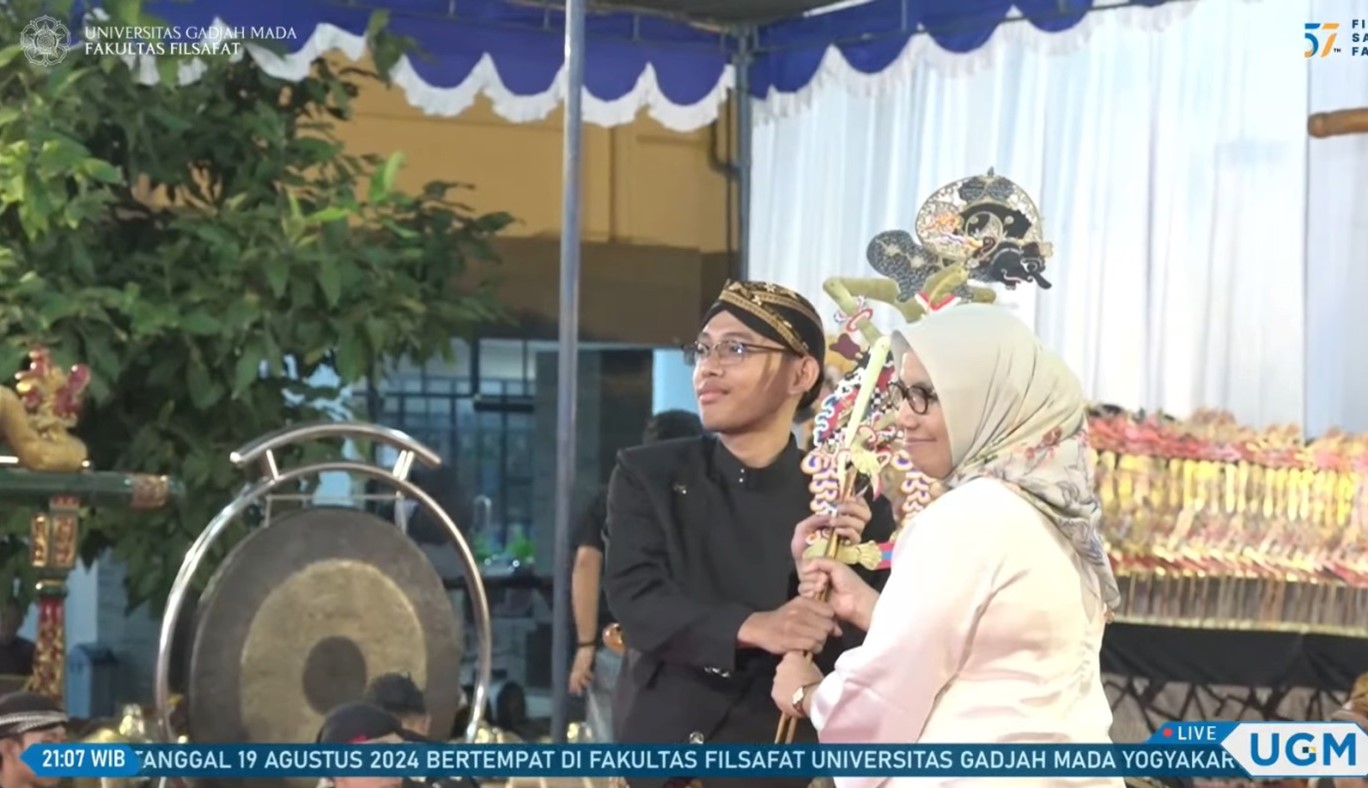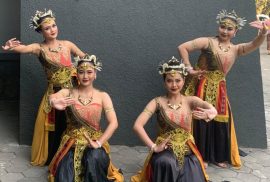September
Pangkur
College StudentMacapatStudentStudent's Work Wednesday, 18 September 2024
Dening: M. Rafi Nur Fauzy
akeh wong kang padha têka
nggawa darma amêjang mring sireki
nyata goro kumatungkul
kagunggung sukeng tyasnya
datan dunung ing sarak sanyatanipun
mula sire den prayitna
nulya amundura kaki
Asmarandana
MacapatStudentStudent's Work Wednesday, 18 September 2024
Dening: Fauzan Adi Fadurrahman
Sinasmita sêrat iki
minangka criyos sih smra
pêpengêt kang wus kadados
wit ing wyata gajah mada
nagri Ngayogyakarta
kang candrasêngkalanipun
wrêkseng tlaga bêdhah tunggal
nendra raka laksanani
den wêwayang suryanira
kalaning rêm netra katon
manising esêm gupita
syara mrêdu bêbungah
pijana datan ngrêridhu
yahagen kang raka rasa
Quoted in full from: cebu.fkkmk.ugm.ac.id
Recently, the World Health Organization (WHO) declared Monkeypox a global health emergency. The disease, which was first transmitted to humans in 1970 in the Republic of Congo, has been detected in Indonesia, and as of August 17, 2024, there were 88 confirmed cases (Rokom, 2024). This incident reminds us of the COVID-19 pandemic that hit the world in 2020.
The history of disease outbreaks is not new. The Asian Flu (1957-1958), Spanish Flu (1918-1920), and The Black Death (1346-1353) (Kautsar, 2024), are just some examples of major outbreaks that have hit the world. In addition to major epidemics, various small endemics also often occur in certain regions.
Various disease outbreaks have been recorded in manuscripts and written records. Taruna Dharma Jati, Muhammad Ibu Prarista, Zalsabila Purnama, & Zakariya Pamuji Aminullah (2022) in a scientific article entitled Lawe Wĕnang Singid: The Red Thread of Pagĕblug Handling Continuity in the Perspective of Javanese Literature explains that Javanese written literature has contained information in the form of traces and handling of physical and cosmological plagues in Javanese oral and written literature.
Some manuscripts that contain information on the physical treatment of disease outbreaks include Naskah Ngelmu Kawarasan by Sardjita (1920), Naskah Lĕlĕmbut Kolerah by Samsimihardja (1914), and Naskah Lĕlara Gudhig by Sardjita (1921). These texts provide guidance on the prevention and treatment of various diseases that once plagued society in their day.
- Manuscript of Ngelmu Kawarasan
The Ngelmu Kawarasan manuscript contains knowledge about diseases such as malaria, smallpox, bubonic plague, and tuberculosis. One part of the manuscript explains how to deal with bubonic plague:
[...] Rekadaya kangge nanggulangi pes, botĕn wontĕn malih kajawi tikus-tikus punika kĕdah dipuntumpĕs. Griya-griya ingkang kĕrĕp dipunrĕsiki. Sarta sampun nyimpĕni sisa tedha
“There is nothing more effective against bubonic plague than culling rats, cleaning houses frequently, and not storing leftover food.”
This guide shows the importance of environmental hygiene as a preventive measure against infectious diseases such as bubonic plague, which is transmitted by rats.
- Manuscript of Lĕlĕmbut Kolerah
The Lĕlĕmbut Kolerah manuscript focuses on ways to avoid cholera. Here is one of the contents of the manuscript:
[...] Prentah nagara dikon ngombe banyu bening wedang ora kĕna mamangan kang ora matĕng, ora kalawan diratĕngi adus ing bangawan.
“The state commandment says to drink boiled water, not to eat raw food, and to bathe frequently in the river.”
Here, there is an emphasis on drinking boiled water and personal hygiene as preventive measures.
- Manuscript of Lĕlara Gudhig
The Lĕlara Gudhig manuscript explains how to prevent and cure gudik (gudhig), a contagious skin disease. One of the quotes from this manuscript states:
[...] Supaya wong sing wis waras iku ora kumat maneh. Yen panyegahe lalara gudhig iku arĕp ditindakake supaya wong-wong bumi liya-liyane padha bisa milu. Dheweke kudu dipĕrdi rĕsikan, yaiku: ngrĕksa rĕsiking kulite ing panggonan-panggonan sing pĕrlu. Sedhiyan banyu adus kudu dibecikake. Sarta kudu ambudidaya supaya rĕgane sabun dimurah bangĕt, nganti wong miskin padha kelar sabunan. Wong-wong mau ditĕrangake sing tĕmĕnan, yen ora mung awake bae sing mesthi rĕsikan nanging sandhangan lan paturone uga mangkonoa. [...]
“So that people who are already healthy from scabies do not relapse, prevention of scabies should be carried out so that people in other areas can follow each other. They should be accustomed to clean living, keeping their skin and other places clean. Good water should be provided for bathing, and efforts should be made to reduce the price of soap so that the poor can use it. These people are to be explained seriously, that not only the self must be clean but also the clothes and bedding as well. [...]”
This message highlights the importance of personal hygiene with access to hygiene tools, such as soap, as well as ensuring that clothes and bedding are clean, to prevent skin diseases.
The above are just a few of the various explanations of plague prevention in Javanese literature. Although it can be said to be old stuff, the principles contained are still relevant today, especially in the context of preventing disease outbreaks that are transmitted through unsanitary environments.
Further exploration of ancient Javanese manuscripts is an important step to broaden our horizons on the history of health and medicine in Indonesia. Collaboration between academics, philologists, and health practitioners can help develop the knowledge recorded in these manuscripts, so that it can benefit the wider community.
BIBLIOGRAPHY
Bestari, N.P. (2022, July 24). ). Sejarah Perjalanan Cacar Monyet dari Afrika sampai Mendunia. Cnbcindonesia.com. Accessed from https://www.cnbcindonesia.com/news/20220724153248-4-358100/sejarah-perjalanan-cacar-monyet-dari-afrika-sampai-mendunia.
Jati, T.D., Prarista, M.I., Purnama, Z. & Aminullah, Z.P. (2022). Lawe Wĕnang Singid: Benang Merah Kontinuitas Penanganan Pagĕblug dalam Perspektif Kesusastraan Jawa. Jumantara: Jurnal Manuskrip Nusantara, 13(01), 95-112, from https://doi.org/10.37014/jumantara.v13i1.2847.
Rokom. (2024, August 18). 88 88 Kasus Konfirmasi Mpox di Indonesia, Seksual Sesama Jenis jadi Salah Satu Penyebab. Sehatnegeriku.kemkes.go.id., Accessed from https://sehatnegeriku.kemkes.go.id/baca/rilis-media/20240818/1546252/88-kasus-konfirmasi-mpox-di-indonesia-seksual-sesama-jenis-jadi-salah-satu-penyebab/.
LIST OF IMAGES
Cebu.fkkmk.ugm.ac.id. (2020, August 19). ). CE&BU Bersama PKMK dan Cochrane Indonesia Menyelenggarakan Webinar Mengenai Bukti Ilmiah tentang Penanganan Wabah Pandemik COVID-19. Retrieved from https://cebu.fkkmk.ugm.ac.id/2020/08/19/cebu-bersama-pkmk-dan-cochrane-indonesia-menyelenggarakan-webinar-mengenai-bukti-ilmiah-tentang-penanganan-wabah-pandemik-covid-19/
Javanese Language, Literature, and Culture Study Program Students Mastermind the Puppet Performance of Gajah Mada Suci
College StudentNewsSDGSStudentStudent's ActivityStudent's Work Monday, 9 September 2024
On Monday night (08/19/2024), the Faculty of Philosophy, Universitas Gadjah Mada (UGM), organized a shadow puppet show in the framework of the anniversary of the Faculty of Philosophy. The performance featured a special play, Gajah Mada Suci, which was performed collaboratively by UGM students who are members of the UGM Surakarta Style Javanese Arts Unit (UKJGS). One of the important roles in this performance was carried out by M. Rafi Nur Fauzy, a student of the Javanese Language, Literature, and Culture Study Program class of 2023, chosen to perform a play that was collaboratively worked on by the academics community of Universitas Gadjah Mada.
The script for the performance of Gajah Mada Suci was written by Dr. Rudy Wiratama S.I.P., M.A., lecturer of Javanese Language, Literature and Culture Study Program. Gajah Mada Suci tells the story of the scapegoating of Gajah Mada under the pretext of the failure of the Majapahit Kingdom expansion. The expansion also coincided with the kingdom's internal political turmoil. To make matters worse, Gajah Mada was accused by the elites of trying to remove him from the kingdom. As a result, Gajah Mada felt desperate and afterward he visited the residence of his friend, Mpu Tantular. After a long dialog, Gajah Mada was finally enlightened, that the efforts he had made so far were not in vain. The spirit of Amukti Palapa to unite the archipelago will continue in the next era.
Handover of the Gajah Mada puppet from the Dean of the Faculty of Philosophy, Dr. Rr. Siti Murtiningsih, S.S., M. Hum, to M. Rafi Nur Fauzy. (Quoted from the Faculty of Philosophy Youtube Channel (01:22:51): https://www.youtube.com/watch?v=03x2lmMinTY).
“The performance of the Gajah Mada Suci is a form of depiction of the Indonesian nation that has experienced an identity crisis by winning over an interest and power through any means. Gajah Mada, who was a knight, finally moksa due to the deviant behavior of the Majapahit elite. After that, the Majapahit Kingdom lost its authority and then receded until it reached its collapse,” explained Rafi in an interview (05/09/2024).
As a special play, Rafi and his fellow UKJGS students practiced hard for a maximum performance. “The performance of Gajah Mada Suci has its own challenges for us. We practiced preparing for the performance in only half a month. Plus, this is my first time to play the Gajah Mada puppet, so it must be carefully prepared.”
“With these challenges, Alhamdulillah, the show can run smoothly. It was a great experience for me,” he continued. Rafi hopes that the Gajah Mada puppet show will be held continuously because it is the work and identity of UGM as well as containing values that need to be socialized.
The existence of the Gajah Mada puppet is a real effort to promote the history and culture of the archipelago while still applying its relevance to the times. Through culture, we are not only 'displaying' aesthetics, but also reaffirming the nation's identity through noble values for a better Indonesia.
Author: Haryo Untoro
Image Source
Fakultas Filsafat. (2024, August 19). Pagelaran Wayang Kulit Dies Natalis ke-57 Fakultas Filsafat UGM. [01:22:51]. Accessed from https://www.youtube.com/watch?v=03x2lmMinTY.
Ratnaraya Presents Geol Denok Dance at Mangayubagya Graduation of FIB Graduates Period IV of the 2023/2024 Academic Year
College StudentNewsSDGSStudentStudent's Activity Monday, 9 September 2024
Thursday, August 29, 2024, became a special moment for the Faculty of Cultural Sciences (FIB) Universitas Gadjah Mada with the holding of the Mangayubagya Graduation of Undergraduates period IV of the 2023/2024 academic year. A total of 244 graduates celebrated their graduation, holding a bachelor's degree after completing their studies at FIB. The solemn graduation ceremony was made even more lively with a dance performance from Ratnaraya, a student dance unit of the Javanese Language, Literature and Culture Study Program.
Four students, Audrey Gisela, Ganes Larasati, Novalia Hidayatus S., and Wening Hidayati, presented Geol Denok Dance as part of the graduation ceremony. Geol Denok dance is a typical Semarang dance that depicts the joy of Semarang girls who dance with lively, energetic movements and accompanied by dynamic music. Etymologically, the word “geol” refers to the dance movements of the knees and hips, while “denok” is a term for girls in Semarang.
In an interview with Wening Hidayati, one of the performers, she said that Geol Denok Dance was a new dance for Ratnaraya members. “We try to give our best in this performance, and are very happy to be able to welcome the graduates of FIB UGM with Geol Denok Dance,” said Wening (09/05/2024).
Ratnaraya's performance is not only for entertainment, but also reflects the Faculty's commitment to preserving Nusantara culture, especially Javanese culture. This cultural preservation requires support and collaboration from various parties, and FIB UGM plays an active role by providing the widest possible space for art and cultural exploration, so that the nation's identity remains relevant and provides benefits to people's lives.
Kintan Dewinta Putri, a student of the UGM Javanese Language, Literature, and Culture Study Program, Becomes Yogyakarta Cultural Ambassador 2024
College StudentNewsOtherSDGSStudentStudent's Activity Monday, 9 September 2024
Good news came from the Javanese Language, Literature, and Culture Study Program, Faculty of Cultural Sciences, Universitas Gadjah Mada (FIB UGM). Kintan Dewinta Putri, a student of the program, has been selected as the Princess Cultural Ambassador of Yogyakarta 2024. She was selected along with Duta Andhika, the Son of Yogyakarta Cultural Ambassador 2024, on May 4, 2024, at Sleman City Hall, Yogyakarta.
Based on an interview with Kintan (09/06/2024), being a Yogyakarta Cultural Ambassador is not just a competition, but also must understand and participate in the preservation of Javanese culture, especially the cultural identity of Yogyakarta. “As Yogyakarta Cultural Ambassadors, it is our duty to contribute to the mission of recognizing and preserving arts and culture in Yogyakarta. Examples of activities include being a judge for the Krincing Manis dance studio's class promotion and participating in the Jamasan Pusaka 1 Suro ceremony at the top of Suroloyo, Kulonprogo. In the future, we plan to do community service in Gunung Kidul and other places by teaching about Yogyakarta's culture and arts,” she explained.
Kintan is grateful to have won the title of Yogyakarta Cultural Ambassador 2024 and is proud to be part of the agent of change in the effort to preserve Yogyakarta's culture. She explained that she is currently preparing to participate in the Indonesian Cultural Ambassador event. “Currently, I am preparing myself for the Indonesian Cultural Ambassador event to be held on September 19-21, 2024, in Surabaya. Please pray and support!”
Culture is the result of copyright, taste, and karsa and is an identity for its people. The existence of these various identities is an identity of the Indonesian nation, which is diverse and lives together in harmony. Kintan's achievements are an inspiration for Mahadaya to continue to explore, preserve, and explore the potential of Indonesian culture, and provide benefits to the community.

